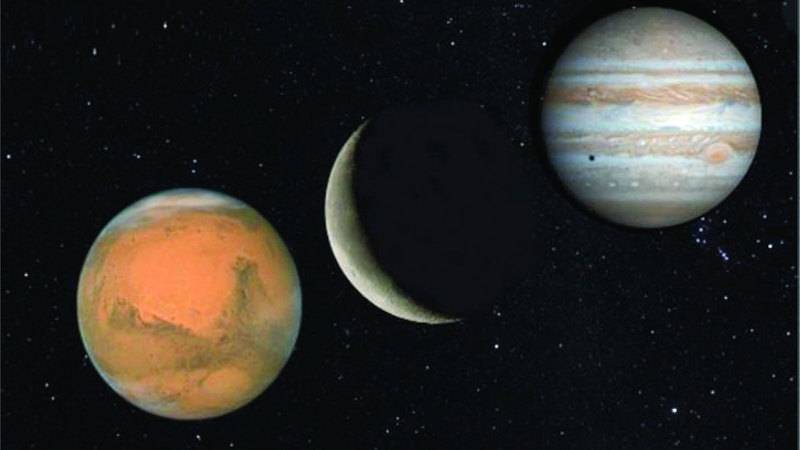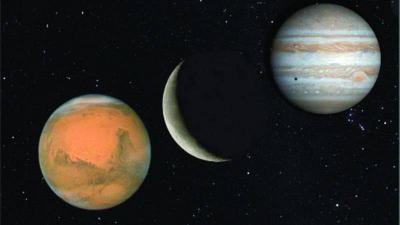Mars and Jupiter are approaching their closest point in the night sky this decade. On Wednesday, the two planets will be very close to each other, at least from our perspective, to the point where a small slice of the moon could separate them. In reality, the largest planet in our solar system and its faint red neighbor will be over 350 million miles (575 million kilometers) apart in their orbits. The two planets will reach their minimum separation of one-third of a degree, or about one-third the width of the moon, during daylight hours on Wednesday across most of the Americas, Europe, and Africa.
In this context, John Giorgini from NASA's Jet Propulsion Laboratory in California stated that the planets will not appear significantly different even hours or a day before when the sky is dark. The best views will be in the eastern sky, towards the constellation Taurus, before sunrise. These alignments, known as planetary conjunctions, occur only about every three years. Giorgini told the Associated Press, "Such events are mostly elements of curiosity and beauty for those who watch the sky, wondering what it might be like for the two bright bodies to be so close to each other... Science is in the ability to accurately predict events years in advance."
Their orbits have not brought them this close since 2018, and this conjunction will not happen again until 2033. The planets were closest together in the past millennium in 1761, when Mars and Jupiter appeared to the naked eye as a single bright object, according to Giorgini. This recent conjunction of Mars and Jupiter coincides with the Perseid meteor shower, one of the brightest meteor showers of the year. It is noted that no telescopes or binoculars will be necessary to observe this phenomenon.




